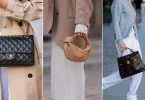Australia’s market for independent activewear labels in the activewear space has grown significantly in recent years, highlighting the importance of quality. Keeping relevant in a more crowded and discriminating market is a new problem for smaller, independent apparel brands as the first fitness surge starts to level out. Through the development of fabric technology, community feedback, and purposeful design, these boutique businesses are showcasing the industry’s potential for long-term sustainability. One such brand, CSB, among other activewear brands, reflects this shift toward a more intentional and customer-conscious approach to women’s activewear in Australia.
Fabric First: Purpose-Driven Innovation
Modern performance wear is expected to support a full range of motion, regulate temperature, and maintain its form after repeated washes. In response to these demands, some Australian brands—including AU-based labels like AU Shopcsb—have introduced collections featuring specific blends of functional fabrics designed for exercise.
While fabric names and compositions vary across brands, typical offerings include:
- Lightweight, breathable materials are ideal for low-impact activities such as yoga or Pilates
- Compression fabrics are suited to high-intensity training and intense workouts
- Recycled blends that appeal to eco-conscious consumers for casual, everyday wear
Other brand offerings include recycled fabric blends that support everyday wear while aligning with eco-conscious preferences. These textiles are featured in products like supportive sports bras Australia, functional gym leggings AU, and stylish tights, hybrid lifestyle pieces designed for comfort and purpose.
| Fabric Type | Best For | Benefits |
| Lightweight Blend | Yoga, Pilates | Soft, breathable, gentle on skin |
| Compression Knit | Gym, HIIT | Durable, supportive, sweat-wicking |
| Recycled Blends | Athleisure wear, casual | Sustainable option, environmentally conscious |
Design Intent: Activewear Collection Built for Movement
Boutique brands often emphasise practical designs intended for real activity. For instance, yoga and Pilates wear Australia must feature high flexibility, low-friction seams, and breathable materials to accommodate controlled motion. Customer feedback, such as reviews or social media interaction, plays a key role in how these brands refine features.
Due to these factors, practical design elements, such as discrete waist pockets, reinforced seams, or bike shorts with additional core support, are becoming increasingly popular. These characteristics are based on typical customer demands and preferences rather than current trends, which helps brands create effective designs.
Customer-Centred Experience
Many boutique brands rely on streamlined digital platforms. While not all provide customisation features like quizzes, some are exploring such additions to help customers make informed decisions.
AU Shopcsb, for instance, offers clear product categories and visual cues, though interactive shopping tools are not currently part of their experience.
Product pages typically include product descriptions, style imagery, and basic size references, though detail levels vary between brands.
Movement-Based Collections Over Seasonal Drops
Rather than focusing on traditional seasonal collections, boutique activewear brands may build capsules based on movement type. An activewear collection including a Pilates set might consist of breathable layers and seamless leggings, while gym sets may feature scrunch-bum leggings AU for enhanced compression and support.
This activity-focused approach encourages customers to construct a meaningful and useful wardrobe that balances functionality and beauty by assisting them in selecting clothing that complements their movement.
Adaptability in a Changing Market
Many independent businesses maintain their agility by maintaining limited and targeted collections rather than expanding for mainstream appeal. This allows them to remain agile in production, respond to user feedback, and align with principles like ethical sourcing, though practices vary.
Their appeal often lies in their prioritization of comfort, body function, and community connection over mass trends.
Balancing Cost and Value
While boutique pieces such as functional gym leggings (AU) and supportive sports bras (Australia) often come at a higher upfront cost than fast fashion, they’re typically designed for quality, durability, and performance. This makes them potentially more cost-effective when considering wear-per-use over time.
Mix-and-match basics—leggings, bras, outerwear, and accessories—help consumers build a wardrobe with fewer, more intentional purchases.
FAQs
- How do boutique activewear companies differ from more established ones?
Rather than mass manufacturing, boutique businesses frequently prioritize a thoughtful design process, premium materials, and deeper community involvement.
- Are scrunch-bum leggings useful?
Yes, when made from durable, supportive materials, they offer compression, support, and shaping during workouts.
- Is it required to use sportswear designed for Pilates?
While not required, Pilates-specific gear can improve comfort, breathability, and performance for regular practitioners.
- Are the possibilities from boutique athletic businesses reasonably priced?
Though usually priced higher than fast fashion, they often provide more wear over time, delivering better long-term value.
Conclusion: A Shift in Activewear Culture
As the early surge of fitness apparel driven by trends declines, a more deliberate and grounded phase is beginning to emerge. Design choices are increasingly more influenced by style, function, fit, and user input than by seasonal aesthetics.
Examples of this progression are companies such as AU Shopcsb. Their method shows a dedication to careful and innovative design, whether it’s providing light and breathable clothing suitable for Pilates, including recyclable fabrics, or scrunch-bum leggings AU that stay in place while being used vigorously. Boutique companies are establishing a sustainable future for themselves by complementing the way customers live and move, drawing inspiration from their needs rather than just following the herd.







